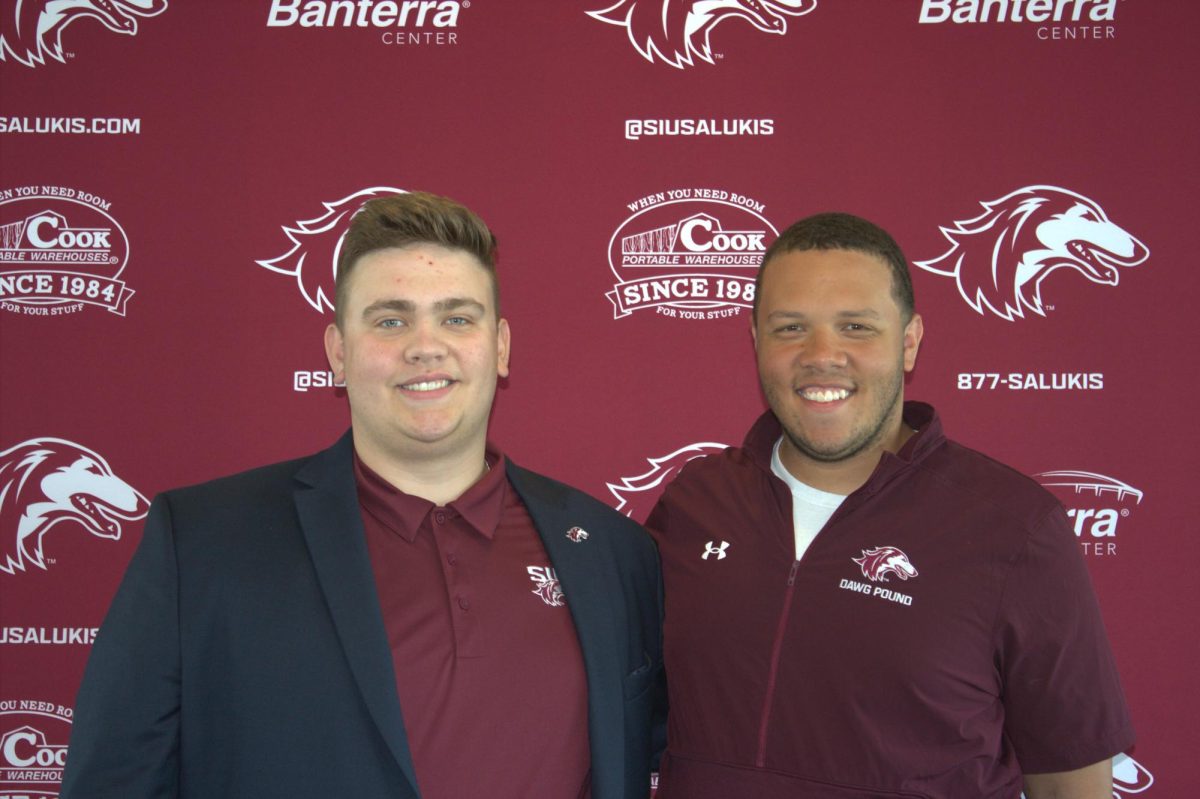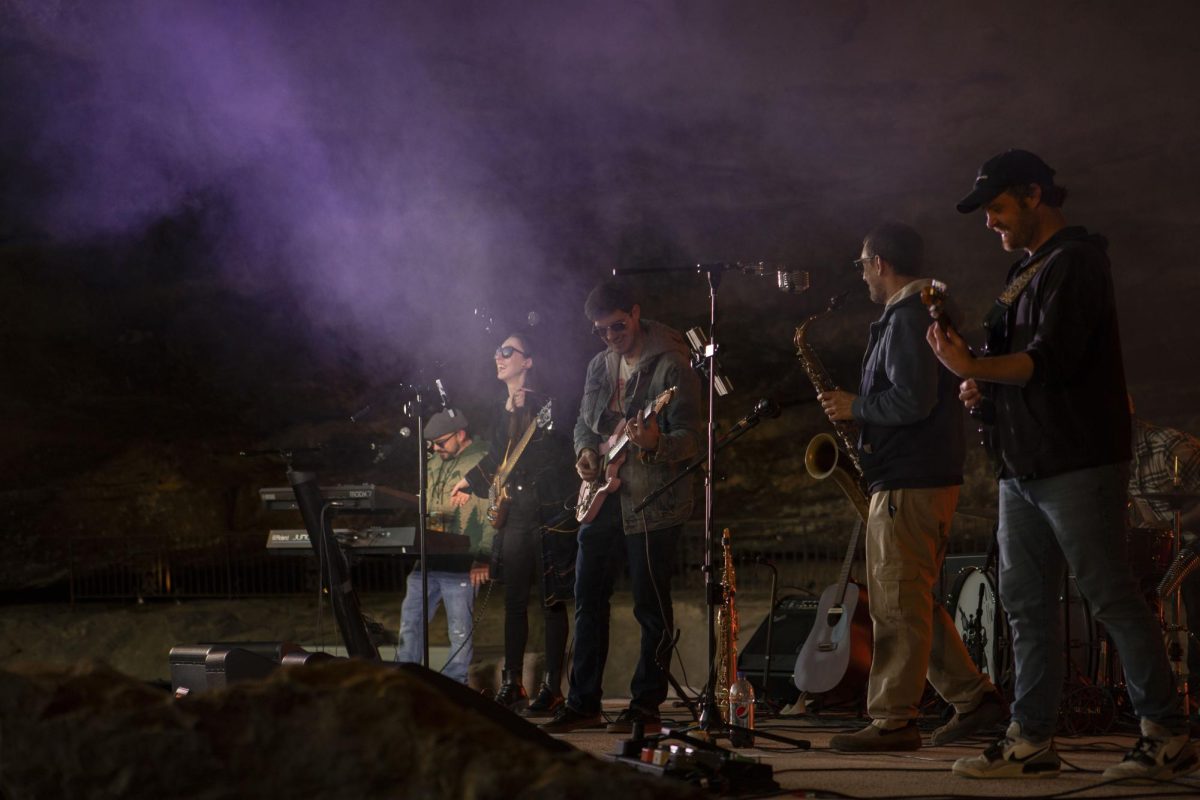Rec Center to improve energy efficiency
September 14, 2011
Paul Lannom, a university custodian, stands next to one of the air handling units, or HVACs, Wednesday in the basement of the Recreation Center. If the Illinois Board of Higher Education approves a million bond requested by the Recreation Center, all HVACs will be replaced with modern ones. Corné Prozesky, associate director of facilities and operations, said once the bond is approved, it will take about 12 months to start the project and 18 to 24 months to complete. – Steve Matzker | Daily Egyptian
The Recreation Center awaits approval to fund energy efficient renovations to its heating, ventilation and air conditioning system.
If approved, the renovations will replace the 33-year-old HVAC system but administrators emphasize the change will improve student comfort, reduce energy cost and limit energy consumption, said William Ehling, director of Recreation Sports and Services.
Advertisement
“Our number one complaint in this facility from students is the temperature,” Ehling said.
Talisa Nave, a senior from Arcola studying hospitality and tourism administration, has worked at the center for three years and said she thinks improvements would be beneficial for students because the center is one of the most used buildings on campus.
She said when the current system initially turns on, it can make a room either too hot or too cold and students often complain about the center’s temperature being uncomfortable.
“As an employee, I don’t really notice it as much as I do when I’m a patron,” Nave said.
The center has asked for a $4 million bond from the university for the improvements which will be paid back over a 20-year period through energy cost savings as a result of the renovations, Ehling said.
Ehling said if the center had relied on student fees to pay for the updated system, instead of the bond, student fees would have increased by $12.
As a result of the bond being used, the center now plans to ask for a $1 student fee increase to help with funding instead, he said.
Advertisement*
The SIU Board of Trustees approved funding for the project Sept. 8, but the center is still waiting for a final approval from the Illinois Board of Higher Education before the renovation process can begin, said Corne Prozesky, assistant director of facilities and operations.
The new system will use energy management software to schedule HVAC operation which directly reduces energy consumption and utility cost for the center, he said.
Joe Klontz, a junior from Chicago studying video production, said he thinks improvements to the system would be a plus for students.
He said he uses the center at least five days a week and thinks most students would like the improvements, but others may disagree and want the money to go to other areas.
“If I would notice a distinguishable difference then I’d probably make more of an effort to go there,” Klontz said.
Phil Gatton, director of Plant and Services Operations, said campus buildings often have problems with equipment as they get older which can require the plant to make emergency repairs.
“We have a lot of (equipment) around the university that’s beyond its useful life; we just put Band-Aids on it and try to keep it going,” he said.
Gatton said the new system would scale back on energy use at certain times of the day when people aren’t in the building or using certain rooms.
“You’ve got a system right now that puts the same (energy) amount out no matter what,” he said. “The newer systems are smarter, can be pre-programmed and have the ability to operate at variable speeds.”
The life expectancy of most systems built when the center’s system was installed 33 years ago is around 20 to 25 years, Ehling said.
He said renovations would start in about 12 months and take one to two years before completion.
“Any day, any one of (the older units) can go down; they’re all the same age,” Prozesky said.
Prozesky said newer air handlers can sense temperatures coming back through the system and adjust the air conditioning according to room occupancy.
Ehling said the bond funds will be used to renovate most of the center but other improvements might be made to reduce energy cost as well.
Researchers found the 1,000 watt light bulbs used in Edward J. Shea Natatorium could be switched with 200-watt to 400-watt lights, Ehling said.
The center was previously given an energy reduction grant to replace lights in certain areas at a cost of labor for the school, he said. Labor fees were paid back within the year from the savings generated by the energy reduction, he said.
Prozesky said when a ventilation unit does go out, the cost can run up to $250,000 as well as cause discomfort for students in areas of the center.
“We’ve spent a major chunk of our maintenance budget just maintaining what we have,” he said.
Gatton said maintenance repairs to the HVAC system in the Recreation Center during the last 10 years, not including unit replacement costs were almost $200,000.
He said the Recreation Center and plant staff will work together under state guidelines to hire architects, engineers and contractors to assess and complete the renovations.
The plant will also oversee the firms contracted to make sure work follows university standards and is finished properly, Gatton said.
“At some point in time the repairs become more costly than a replacement, the Band-Aid mentality only works so long,” Gatton said. “Hopefully (students) will have better comfort (in the rec) but also at a lower cost.”
Prozesky said the center has focused on environmental issues for a few years now and has made changes to reduce waste and energy consumption.
One project the center works on is to reduce the use of throwaway plastic water bottles by providing filtered water-filling stations in certain areas, Prozesky said.
Batteries were also installed on some of the center’s disability doors that charge off of kinetic energy when pulled open and store the energy for when the door button is pushed, he said.
Prozesky said the door and water stations were paid for by the Recreation Center and green fund student fee, a fee charged each semester to make sustainability improvements.
He said the center has a strong interest in environmental sustainability and raising awareness about the carbon footprint people leave.
One year, the center collected plastic bags from students for three weeks and created a mound to illustrate how much plastic waste is created in such a short time, Prozesky said.
Ehling said the center will challenge the renovation design team to create ways to maximize the system’s energy efficiency as much as possible.
“Environmentally, it’s the sustainable thing to do to produce the energy we’re using,” he said.
Advertisement








